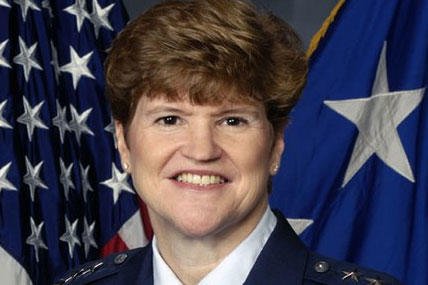NATIONAL HARBOR, Md. -- Sequester-mandated furloughs put a dent in what had been a significant increase in depot production this past year, but the head of Air Force Materiel Command predicts the service could be back on track as early as March.
"We had to slow down substantially relative to all that great momentum that we had going [because of] those furloughs," Gen. Janet Wolfenbarger, head of AFMC, said Monday at the Air Force Association's annual conference here.
She estimated that the furloughs pushed the Air Force back to until the second quarter of 2014 when the service would be able to regain the production level it had previously attained.
"I'll tell you that all hinges on not having to embrace additional furloughs in 2014."
Sequester cuts forced by Congress' inability to pass a budget last year caused civilians employees to lose six days of work and the productivity that would otherwise have been attributed to those days.
The Air Force warned Congress in February that once sequestration took effect in July it would hit aircraft sustainment by deferring 30 percent of the remaining depot maintenance for fiscal 2013. That would represent 18 percent of the fiscal year's sustainment effort on more than 30 types of aircraft and weapons systems and could necessitate the grounding of some of the fleet, officials said.
For the Air Force Material Command alone, furloughed personnel accounted for 1.4 million lost production hours, according to Wolfenbarger.
Wolfenbarger didn't offer any figures relative to how the furloughs hit earlier depot productivity gains.
She said there had also been improvements in other areas, including backorders down 21 percent, depot work stoppage down 18 percent, and critical parts shortages down 25 percent.
"But [the depots] are now being ramped up again, and they are looking at being recovered to that workload responsibility by second quarter of 2014," she said.
The civilian furloughs also took on "our test world," she said.
"We went to a four-day fly week to accomplish our critical test mission because we because we have a very large civilian workforce in AFMC. About 57 percent of my workforce is civilian," she explained.
Notwithstanding tighter budgets Wolfenbarger said she is pleased that within the Air Force and across the Defense Department, science and technology budgets have consistently held a top priority.
"I really feel that from a budget perspective we have the endorsement of the senior leadership," she said.



























